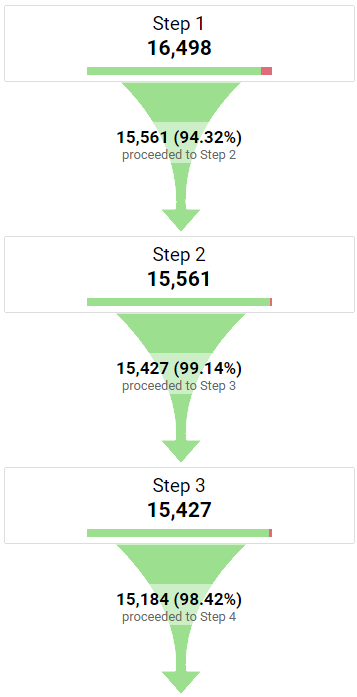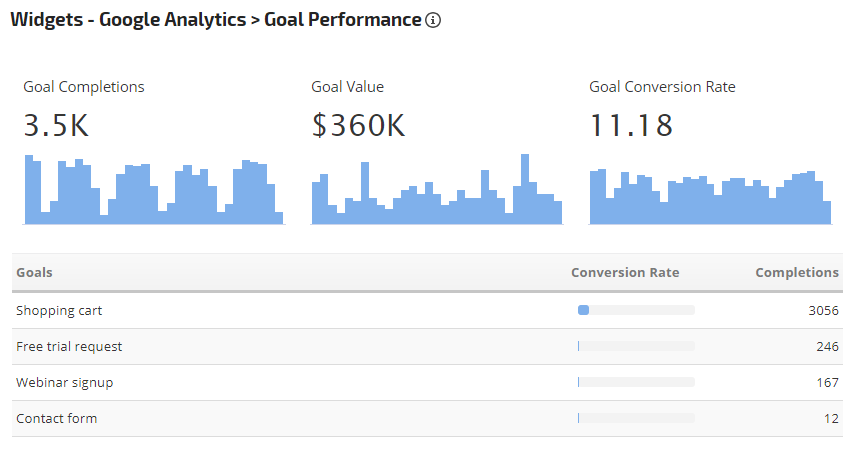What Data Is Google Analytics Goals Unable to Track: A Full Guide
What Data Is Google Analytics Goals Unable to Track: A Full Guide
Blog Article
Discover the Limitations of Google Analytics Goals: Unveiling the Data Types That Remain Untrackable
As organizations increasingly count on data-driven decision-making, comprehending the limitations of devices like Google Analytics becomes vital. While Google Analytics Goals offer important understandings into user communications, there exist information types that elude monitoring, presenting challenges to an extensive understanding of user habits. These untrackable information types raise questions regarding the precision and completeness of the analytics data that organizations greatly trust for their digital approaches. Curious to reveal the hidden blind areas in your data analysis procedure?
Insufficient User Journey Tracking
Insufficient individual trip monitoring within Google Analytics can prevent the capability to accurately evaluate individual actions. When the user journey is not fully tracked, there are voids in the data that avoid a thorough understanding of exactly how individuals communicate with a web site. This absence of understanding can lead to missed chances for optimization and improvements to the customer experience.
One usual issue with incomplete user trip tracking is the failure to see the full path that users take before finishing a goal or leaving the site. Without this info, it is challenging to recognize where individuals might be encountering barriers or rubbing points that avoid them from converting. Additionally, insufficient monitoring can cover the influence of particular advertising and marketing initiatives or web site changes on user actions.
To address this constraint, it is vital to establish proper monitoring devices within Google Analytics to catch the whole customer journey. This may include establishing occasion tracking, goal funnels, or making use of devices like Google Tag Supervisor to make sure that no crucial interactions go unrecorded. By getting a thorough view of the individual trip, internet site owners can make even more informed choices to enhance individual involvement and drive conversions.
Attribution Difficulties
Navigating through attribution difficulties in Google Analytics needs an extensive understanding of exactly how various touchpoints add to the overall conversion process. Acknowledgment difficulties occur from the intricacy of modern client journeys, where users communicate with multiple channels prior to converting. Google Analytics offers different attribution designs like initial touch, last touch, and direct, each using a different viewpoint on exactly how credit rating is appointed to touchpoints along the conversion path. These models may not constantly accurately mirror the true influence of each touchpoint on the conversion.
One typical attribution obstacle is the trouble in connecting conversions to the appropriate resource, specifically in situations where users interact with multiple networks prior to converting. This can cause inaccuracies in identifying which advertising initiatives are driving one of the most conversions. Furthermore, cross-device monitoring positions one more acknowledgment difficulty, as customers frequently switch over between tools throughout their trip, making it challenging to track their communications seamlessly. Marketers should thoroughly analyze and assess acknowledgment data to make enlightened decisions and enhance their marketing methods successfully.
Offline Conversions
Given the obstacles connected with attributing conversions accurately in online channels, the dimension of offline conversions offers a considerable chance for marketers looking for a much more extensive understanding of their customers' journey. Offline conversions refer to actions that clients take in the physical globe, such as making acquisitions in brick-and-mortar stores or over the phone, participating in occasions, or click over here engaging with printed products - what data is google analytics goals unable to track. These conversions are essential for organizations that operate both online and offline, as they provide valuable understandings right into the performance of marketing projects across numerous touchpoints
Tracking offline conversions commonly positioned a significant difficulty for marketing experts, as it was testing to attach these actions back to particular online interactions accurately. With improvements in technology, such as the integration of CRM systems, one-of-a-kind identifiers, and discount coupon codes, organizations can currently bridge the void in between online and offline information to get a more holistic view of consumer actions. By effectively gauging offline conversions, marketers can maximize their techniques, designate resources much more successfully, and eventually boost the overall client experience.
Cross-Device Tracking
Cross-device monitoring plays a critical function in understanding the interconnected nature of customers' digital interactions throughout numerous gadgets. In today's omnichannel world, where customers effortlessly switch in between desktop computers, tablet computers, additional resources and smart devices, tracking their habits throughout these tools is vital for online marketers to obtain an extensive view of their consumer trip.

Moreover, privacy worries and policies such as GDPR and CCPA have even more difficult cross-device monitoring. With customers requiring more control over their data and increased limitations on tracking innovations, online marketers need to discover cutting-edge and privacy-compliant means to attach customer communications throughout tools.
Dynamic Material Engagement
Comprehending customer engagement with dynamic content is critical in maximizing electronic advertising and marketing approaches for boosted target market communication. Dynamic material refers to web site aspects that change based upon user actions, choices, or other aspects, supplying a tailored experience. Tracking customer interactions with dynamic web content positions difficulties for typical analytics tools like Google Analytics.
While Google Analytics can track fundamental communications like clicks and web page views, it might battle to record more weblink nuanced involvements within vibrant content. what data is google analytics goals unable to track. Metrics such as time invested in particular vibrant aspects, float activities, or communications within pop-ups are usually not conveniently measurable utilizing conventional tracking approaches. This restriction hinders marketing professionals' capacity to fully understand how users are involving with dynamic content and tailor their approaches appropriately

Final Thought
To conclude, Google Analytics objectives have limitations in tracking incomplete user journeys, connecting conversions properly, catching offline conversions, tracking cross-device communications, and gauging vibrant web content involvement. These constraints highlight the relevance of checking out additional tracking approaches and devices to obtain a more thorough understanding of customer behavior and conversions past what Google Analytics can offer.
While Google Analytics Goals offer useful insights into individual communications, there exist data types that elude tracking, posturing obstacles to an extensive understanding of individual actions.Insufficient customer journey monitoring within Google Analytics can impede the ability to accurately evaluate individual actions. When the individual journey is not totally tracked, there are voids in the information that stop a detailed understanding of how users communicate with a web site.One common issue with insufficient individual trip tracking is the inability to see the complete path that customers take previously finishing a goal or leaving the website. By getting a detailed view of the individual journey, internet site proprietors can make more enlightened decisions to improve individual engagement and drive conversions.
Report this page